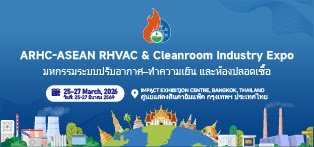Patent Wars and Patient Lives: Inside Roche vs Natco Over Risdiplam
14 April 2025 | Monday | Analysis

In a courtroom packed with legal heavyweights, global pharmaceutical giant F. Hoffmann-La Roche AG faced off against Indian generic manufacturer Natco Pharma Limited in a landmark battle that cuts to the heart of modern pharma: What happens when the protection of innovation clashes with public access to life-saving treatment?
At the center of the dispute lies a rare disease—Spinal Muscular Atrophy (SMA)—and a powerful drug: Risdiplam, an oral treatment developed by Roche and marketed globally under the brand name EVRYSDI®. But the debate that played out before Justice Mini Pushkarna in the Delhi High Court extended far beyond medical chemistry. It touched upon India's delicate balance between honoring patent law and protecting public health, with implications that could ripple across global intellectual property jurisprudence.
The Compound and the Controversy
The plaintiffs, Roche and its Indian arm, claimed infringement of IN 334397, a patent titled “Compounds for Treating Spinal Muscular Atrophy”, which they say protects the molecule Risdiplam. The suit alleged that Natco was preparing to manufacture and commercialize the compound in India based on its own published process patent filed in 2022. Roche sought an immediate injunction to restrain Natco from entering the market.
Natco, a seasoned player in India’s generic drug arena, countered with an accusation of evergreening—a term synonymous with pharma companies extending monopolies through incremental modifications and separate filings. According to Natco, Risdiplam was already “covered” in Roche’s earlier international Genus Patent (WO 2013/119916). Roche’s filing of a “Species Patent” for the same compound in India was merely a tool to prolong exclusivity, the company argued.
Legal Fireworks: Innovation vs Invalidation
The litigation featured deep dives into patent theory: Markush structures, genus-species distinction, implicit vs explicit disclosure, and public domain implications. Roche’s attorneys argued that Risdiplam was not disclosed in the earlier genus patent and had never been subject to challenge in India or abroad. It was a novel molecule, tested, approved, and granted protection in over 60 jurisdictions—including the US, EU, Canada, and Australia.
But Natco’s legal strategy was sharp. They pointed to Roche’s own statements in the US Patent Term Extension (PTE) filings, which referred to Risdiplam as being “covered” under the earlier patent. Moreover, Roche had sued Natco in the US for infringing the very genus patent that it now disavowed as prior art in India. This, Natco argued, was proof of contradictory positioning—a classic case of playing both sides of the field, depending on jurisdiction.
The Interveners: Patients Speak Truth to Power
Adding a powerful twist to the courtroom drama were two interveners—both SMA patients or their advocates—who moved the court on grounds of public interest.
Ms. Purva Mittal and Ms. Seba P.A., through legal counsel, highlighted the devastating financial toll of the Roche drug in India. While Risdiplam is sold at steeply discounted rates to the Indian government under Roche’s Patient Assistance Programme, its cost still hovers near ₹1.5 crore annually, putting it out of reach for the vast majority.
Their appeal was emotional and constitutional: If the drug cannot be made affordable, then what purpose does a patent serve for a population that cannot access the invention? They argued that public interest, especially for life-saving treatments, must override private commercial interests.
Court’s Deep Dive: Decoding Disclosure and Anticipation
In a meticulously reasoned 100+ page judgment, Justice Mini Pushkarna laid bare the complexity of patent interpretation.
Key findings include:
-
Risdiplam is indeed a novel chemical entity, but its structural elements could be deduced from the earlier genus patent. Whether or not it was explicitly disclosed, the court noted that even implicit or inherent anticipation—if determinable by a skilled person in the art—could invalidate a subsequent claim.
-
Roche’s international litigation behavior and filings in other jurisdictions (especially the US) weakened their own position in India. Their dual claims—that Risdiplam was both disclosed in the genus patent (in the US) and not disclosed (in India)—undermined the credibility of their species patent.
-
The court reinforced a critical point of Indian jurisprudence: patents are not presumed valid, and the burden of demonstrating novelty and inventive step falls squarely on the patentee. In this case, Natco had raised a “credible challenge” on those grounds.
Public Interest and The Price of Innovation
One of the most significant portions of the ruling dealt with public interest and irreparable harm. The judge acknowledged that Roche had invested heavily in R&D, clinical trials, and regulatory approvals. But she also emphasized that a life-saving drug priced out of public reach cannot be shielded from scrutiny merely due to investment.
The Court noted:
“Public interest lies equally in protecting the exclusivity of a life-saving drug and ensuring its access to those who need it. In this context, pricing and availability cannot be decoupled from the legal merits of an injunction.”
While Roche argued that it provided discounted rates and ran a Patient Assistance Programme for 486 patients, the court found this number inadequate in comparison to potential patient need in India. The statutory provision of ₹50 lakh under the National Policy for Rare Diseases, 2021, would cover less than half the annual cost per patient.
A Split Verdict: No Final Blows, But a Strategic Stalemate
The Delhi High Court did not revoke the patent. Instead, it refused to grant an interim injunction to Roche—meaning Natco is free, for now, to move forward with Risdiplam’s production in India.
This is not the end of the legal road. The final verdict on the patent’s validity will come during trial. However, by denying the injunction, the court signaled that Roche’s case lacked the prima facie strength required to stop a generic manufacturer at this stage.
Implications for the Indian Pharma Landscape
The ruling marks a significant chapter in India’s evolving patent jurisprudence on pharmaceutical innovation, especially in the context of rare diseases. Key takeaways include:
-
International filings and admissions can be used against patentees even in domestic litigation.
-
Species patents are not immune to challenge, particularly when their novelty hinges on prior genus disclosures.
-
Courts will increasingly invoke public interest and affordability as factors in injunction decisions, especially for critical drugs.
-
The balance between IP protection and healthcare equity continues to tilt subtly in favor of access over monopoly.
Global Echoes: A Precedent for Emerging Markets
This case has attracted the attention of patent lawyers, health economists, and public health advocates worldwide. It reflects a broader trend: emerging economies are beginning to assert greater autonomy over pharmaceutical IP in the name of health sovereignty.
While developed countries may offer longer patent windows and grant more aggressive PTEs, jurisdictions like India are taking a calibrated stance, especially when it comes to essential or orphan drugs.
As Indian courts, policymakers, and companies wrestle with this balance, one truth is clear—the patent system cannot thrive in a vacuum devoid of ethical accountability.
The Patent, the Pill, and the People
This case may seem like just another legal battle over molecules, molecules that cost millions to discover and billions to bring to market. But for the patients waiting on treatment they can’t afford, and for generic manufacturers trying to make a difference, it's much more.
The Delhi High Court has drawn a line—tentative but firm—where science, law, and humanity intersect. It’s a place where Roche’s innovation meets Natco’s challenge, where exclusive rights meet inclusive needs, and where patents are not just papers, but policies that decide who lives, who waits, and who pays.
Disclaimer: This story has been created based on publicly available legal information and court documents accessible via https://indiankanoon.org/doc/26602359/. It is intended for informational and journalistic purposes only.
Most Read
- How Health Systems Are Reshaping Drug Adoption, Partner Models, and Market Access in 2026
- Top 25 Biotech Innovations Redefining Health And Planet In 2025
- The New AI Gold Rush: Western Pharma’s Billion-Dollar Bet on Chinese Biotech
- Top 25 Biotech & Biopharma Leaders in Sustainable Innovation, 2025
- China’s Biopharma Dealmaking Surges in H1 2025, Driven by Record Licensing and Oncology Focus
- Chikungunya in China: How a “Forgotten” Arbovirus Found the Perfect Storm
- How Innovation Gaps in Biopharma Raise New Safety Concerns
- Smart Implants and the Future of Musculoskeletal Injury Treatment
- How Ethical Gaps in Psychiatry Could Undermine Biopharma Progress
- The Evolving Landscape of Women’s Health Innovation in the Asia-Pacific
- Using NLP-Driven Decision Support in Emergency Health Assistance
- Taiwan Steps Into the Global Spotlight With a New Cancer Therapy
- The Role of Unique Device Identification (UDI) in Tracing Medical Device Safety
- The Importance of a Patient’s Mental Health During Clinical Trials
Bio Jobs
- The State of Biotech and Life Science Jobs in Asia Pacific – 2025
- Avantor’s New CEO Ligner Aims to Unlock Global Potential and Deliver Shareholder Value
- AstraZeneca Commits $50 Billion to U.S. Expansion by 2030 in Biggest-Ever Global Investment
- Thermo Fisher, SAMRC, and South Africa’s Department of Science and Innovation Launch CATIR to Nurture Next-Gen Scientists
- Cube Biotech Appoints Former Sartorius CEO Dr. Joachim Kreuzburg to Board of Directors
- FDA’s AI Transition Marks a Turning Point in Drug Review: Industry Faces Pressure to Adapt Amid 20% Workforce Cut
- WuXi XDC Completes Mechanical Build of Singapore Bioconjugate Manufacturing Hub
News
Editor Picks











